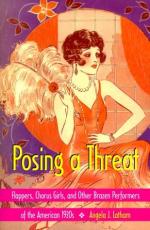|
This section contains 629 words (approx. 3 pages at 300 words per page) |

|
Flapper Girls
Summary: "Flappers" in the 1920s were young women who disregarded conventional rules of conduct and dress. Sometimes referred to as rebels, flappers changed the status and role of all women because of their drastic modification in their actions and clothing, their self-governing attitudes, their demand for the same equality as men, and their pristine style. Flappers embodied the modern spirit of the Jazz Age and paved the way for women today to live as they please.
The flapper era was a time to worship the youth. The word "flapper" was used to describe immoral young women in earlier times, but as the 1920s rolled in, "flapper" described the young women who disregarded conventional rules of conduct and dress. These ladies, sometimes referred to as rebels, changed the status and role of all women because of their determination to dress and act as they felt and, eventually, be accepted by their colleagues. They demanded the same equality that men had and extended women's fashions extraordinarily. Many believe that they only showed change in themselves, but, in fact, they showed change in décor styles in their homes. Flappers paved the way for independent women to live as they pleased.
At the end of World War I, people were expected to return to their traditional ways, but many began to discard the old rules and apply...
|
This section contains 629 words (approx. 3 pages at 300 words per page) |

|


